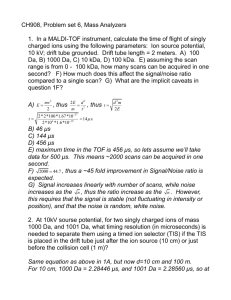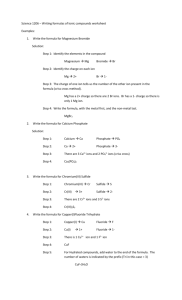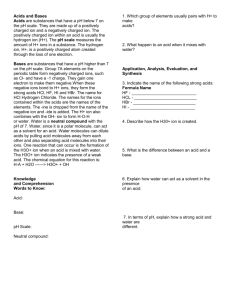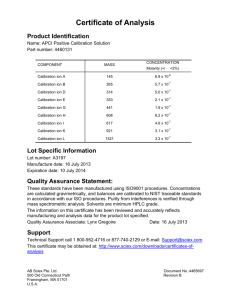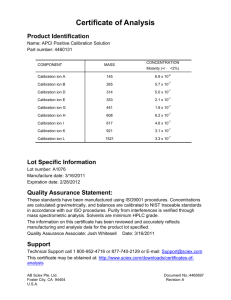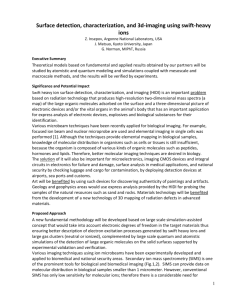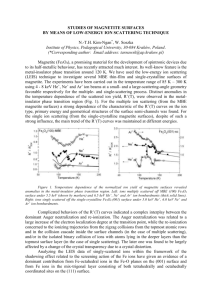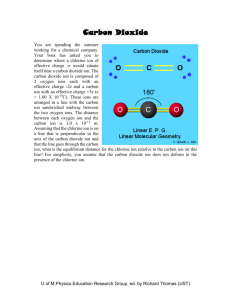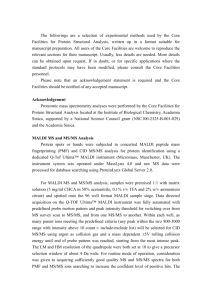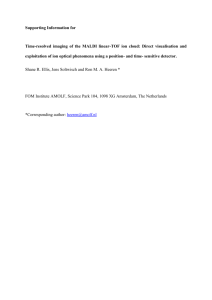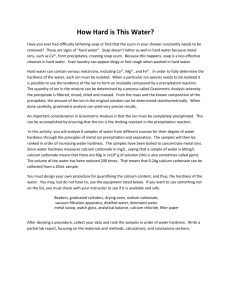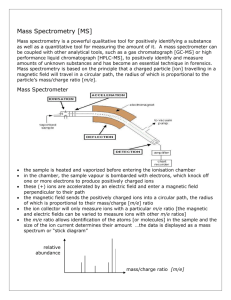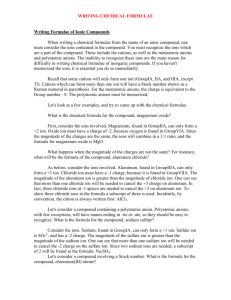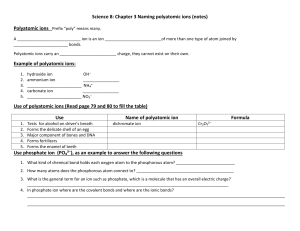rcm6771-sup-0001-figuresAndtables
advertisement
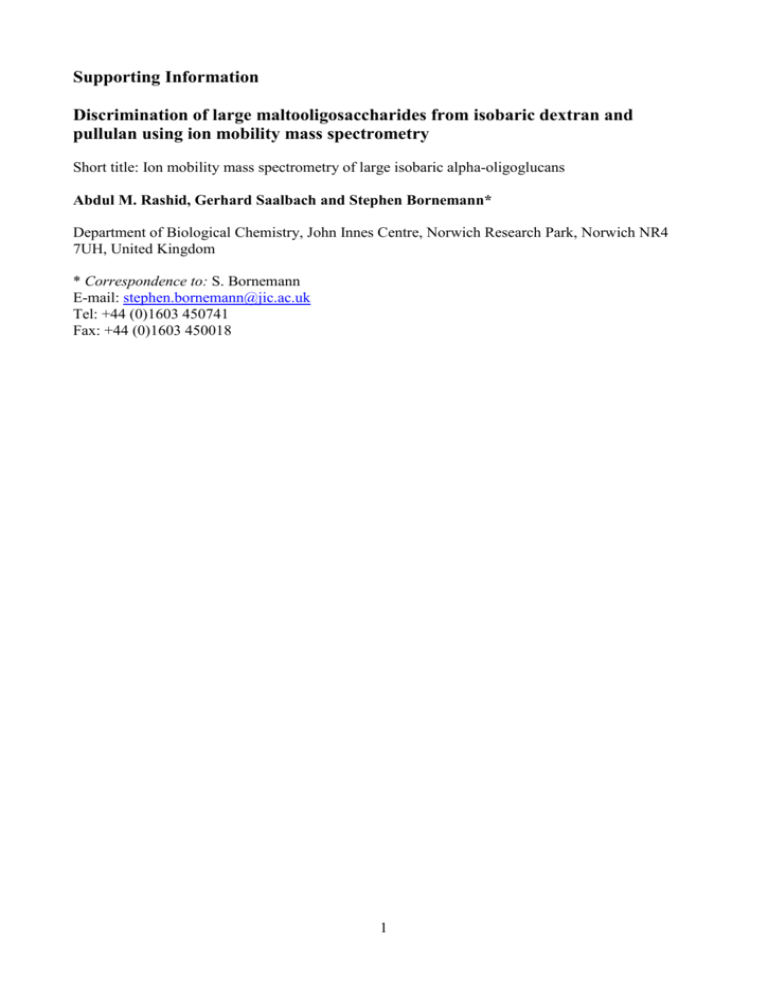
Supporting Information Discrimination of large maltooligosaccharides from isobaric dextran and pullulan using ion mobility mass spectrometry Short title: Ion mobility mass spectrometry of large isobaric alpha-oligoglucans Abdul M. Rashid, Gerhard Saalbach and Stephen Bornemann* Department of Biological Chemistry, John Innes Centre, Norwich Research Park, Norwich NR4 7UH, United Kingdom * Correspondence to: S. Bornemann E-mail: stephen.bornemann@jic.ac.uk Tel: +44 (0)1603 450741 Fax: +44 (0)1603 450018 1 Table S1. Negative ion mobility of α,ω-dicarboxy-terminated polystyrene for the calibration of collisional cross section (Ω) z 1 Ω (Å2) m/z drift time (ms) Literature value 401.20 4.19 132 1 505.25 5.36 163 1 609.33 6.68 196 1 713.40 7.99 210 1 817.47 9.09 236 1 921.54 10.34 262 1 1025.60 11.58 276 2 304.17 2.60 211 2 356.20 3.02 235 2 408.24 3.43 239 2 460.27 3.92 265 2 512.30 4.25 291 2 564.34 4.67 317 2 616.37 5.02 335 2 668.40 5.36 375 2 720.44 5.71 388 J.V. Hamilton, J.B. Renaud, P.M. Mayer. Experiment and theory combine to produce a practical negative ion calibration set for collision cross-section determinations by travelling-wave ionmobility mass spectrometry. Rapid Commun. Mass Spectrom. 2012, 26, 1591. 2 Table S2. Negative ion mobility and collision cross section (Ω) of oxidised insulin chain A from bovine pancreas (most abundant theoretical mass, 2,530.9 Da) z m/z drift time (ms) Ω (Å2) This work Literature value 2 1264.5 6.80 387 388 3 842.6 3.62 391 390 4 631.7 3.28 474 470 5 505.0 2.94 562 Not reported Note that the Driftscope software extrapolated CCS calibration curves for ions with z ≥3 from the calibration curves obtained with z = 1 and z = 2. A.E. Counterman, S.J. Valentine, C.A. Srebalus, S.C. Henderson, C.S. Hoaglund, D.E. Clemmer. High-order structure and dissociation of gaseous peptide aggregates that are hidden in mass spectra. J. Am. Soc. Mass Spectrom. 1998, 9, 743. 3 Table S3. Negative ion mobility and collision cross section (Ω) of decadeoxythymidine (monoisotopic theoretical mass, 2978.5 Da) z m/z drift time (ms) Ω (Å2) This work Literature value 2 1488.3 7.77 421 447 3 991.9 4.38 440 446 4 743.7 4.05 537 537 5 594.7 3.42 618 627 6 495.4 2.73 650 641 The triply charged ion was the most abundant. Note that the Driftscope software extrapolated CCS calibration curves for ions with z ≥3 from the calibration curves obtained with z = 1 and z = 2. C.S. Hoaglund, Y.S. Liu, A.D. Ellington, M. Pagel, D.E. Clemmer. Gas-phase DNA: oligothymidine ion conformers. J. Am. Chem. Soc. 1997, 119, 9051. 4 Figure S1. Proposed assignment of fragment ions (each with loss of 1H+) associated with compounds 3 and 3n (parent ion m/z 503) as shown in Figure 4. Not all potential means of arriving at each ion are shown. Ions that are specific to an isomer are underlined and ions that have significantly different abundances are in italics. The nomenclature of Domon and Costello has been used. B. Domon, C.E. Costello. A systematic nomenclature for carbohydrate fragmentations in FABMS/MS spectra of glycoconjugates. Glycoconjugate J. 1988, 5, 397. 5 161 100 a 341 4 % 545 425 383 443 normalised intensity 179 101 587 503 281 221 263 143 665 605 0 m/z 60 80 100 120 140 160 180 200 220 240 260 280 300 320 340 360 380 400 420 440 460 480 500 520 540 560 580 600 620 640 660 680 700 720 740 341 100 b 4n % 503 161 179 545 383 425 587 101 665 221 251 281 323 143 443 0 m/z 60 80 100 100 120 140 160 180 200 200 220 240 260 280 300 300 320 340 360 380 400 420 400 m/z 440 460 480 500 500 520 540 560 580 600 600 620 640 660 680 700 720 740 700 Figure S2. Fragmentation of 4 (a) and 4n (b) oligosaccharides with DP4 after separation by IMMS. Ions that are specific to an isomer are underlined. 6 Figure S3. Proposed assignment of fragment ions (each with loss of 1H+) associated with compounds 4 and 4n (parent ion m/z 665) as shown in Figure S2. Ions that are specific to an isomer are underlined. Not all potential means of arriving at each ion are shown. 7 827 100 7 a 989 normalised intensity % 665 161 0 100 869 911 929 707 749 767 503 341 1031 1151 1073 m/z 150 200 250 300 350 400 450 500 550 600 650 700 750 800 850 900 950 1000 1050 1100 1150 1200 1250 767 100 b 7n 827 % 707 665 989 737 809 869911 503 545 0 100 100 10311073 1151 929 m/z 150 200 250 300 300 350 400 450 500 500 550 600 650 700 700 m/z 750 800 850 900 900 950 1000 1050 1100 1100 1150 1200 1250 1300 Figure S4. Fragmentation of 7 (a) and 7n (b) oligosaccharides with DP7 after separation by IMMS. 8 Figure S5. Proposed assignment of fragment ions (each with loss of 1H+) associated with compounds 7 and 7n (parent ion m/z 1151) as shown in Figure S4. Not all potential means of arriving at each ion are shown. 9

